A soil mix for Hosta, Caladiums, Ferns, Impatiens
Due to our friendly deer I have been putting plants into large containers. Some plants will remain in the container and others will be treated as Annuals. I've using MiracleGro Moisture Control and the amount I have been using is putting the cost out my control. I can't water every day. Any ideas?
Comments (27)
tapla (mid-Michigan, USDA z5b-6a)
13 years agolast modified: 9 years agoIt sounds like the 5:1:1 mix would be right up your alley. It will drain much better than the MG soil, so provides a much healthier root environment, and is much cheaper to make than buying commercially prepared soils.
If you're interested, you'll find some very good information at the link below that explains what makes the difference between a healthy soil (for roots) and a poor soil.
Al
Here is a link that might be useful: Click me and I'll take you right to what he was talking about.
jojosplants
13 years agolast modified: 9 years agoI have a fern that is doing BEAUTIFUL in the 5-1-1!
I really think you'd like it.
JoJo
Related Professionals
Folsom Landscape Architects & Landscape Designers · Wareham Landscape Architects & Landscape Designers · Waterbury Landscape Contractors · Costa Mesa Landscape Contractors · Edwardsville Landscape Contractors · Forest Hills Landscape Contractors · Franklin Landscape Contractors · Plymouth Landscape Contractors · Pinellas Park Solar Energy Systems · San Jose Window Contractors · Cicero Window Contractors · Bellmawr Fence Contractors · Claremont Fence Contractors · Ellicott City Fence Contractors · Pasadena Fence Contractorsjodik_gw
13 years agolast modified: 9 years agoDoesn't Josh also grow those gorgeous ferns in the 511 or gritty mixes? I'm pretty sure he does.
I'm sure some would argue, but I can't stand that moisture control bagged soil. It drains horribly, and holds onto way too much moisture at the root zone for my taste. I prefer a more inorganic, aerated medium with larger particles... a medium that allows roots to grow as they should, and gives them what they need.
The link tapla provided should explain everything.
jojosplants
13 years agolast modified: 9 years agoJodi,
Your right! I love his ferns, embarrassed for not thinking of it. lol! I'm sure he'll be along later.My fern, and anything else for that matter holds up just fine in this mix! No drying issues with the 5-1-1 or over watered. and this is a WARM climate.
Tomatoes and annuals grew like crazy last summer with only watering once a day. Bagged mixes was twice a day.
I've even got fruit tree's in it.
Sorry no pics, the camera is on the blink, needing to order a cord. :-(
JoJo
jane__ny
13 years agolast modified: 9 years agoPam, I tried to answer your email, but it bounced back. Check your mail from a different address.
Jane
jodik_gw
13 years agolast modified: 9 years agoJoJo, I use a variation of the basic gritty mix for everything... including orchids, cacti, bulbs, trees... you name it! And everything does so well, developing truly healthy and extensive root systems, which in turn promotes good top growth.
I'd highly recommend a more inorganic approach for container growing, using a larger particulate that allows for fast drainage, the proper exchange of oxygen/gases, and is a very good catalyst for moisture and nutrition. Especially as container growing differs so greatly from growing in the ground.
Some of my pots can go a week or so without needing to be watered, and others require moisture sooner. It all depends upon the usual variables. But all plants in containers, regardless of the medium, should be watered as needed... so it's nothing unusual.
greenman28 NorCal 7b/8a
13 years agolast modified: 9 years agoHey, guys and gals! ;-)
Did someone say 'ferns'?! Ferns are my favorites, no doubt from my childhood in the
ferny redwood forests of Humboldt County.Yes, I do have a fern in the 5-1-1! It's my pride and joy, the Giant Chainfern (Woodwardia fimbriata).
I had an Alaskan Fern in the mix for two years, but I relocated it to the maple bed in early January.
I gave my brother a Giant Chainfern for his birthday, as well, which is growing happily in the 5-1-1 mix.
I'll share some pics when I'm home from work today.
Cheers!
Joshgreenman28 NorCal 7b/8a
13 years agolast modified: 9 years agoHere we go!
The first pic is my Giant Chainfern, the largest North American fern.
Obviously the pic is from last Summer, but I chose this pic because it shows the mix nicely:This second pic is the (soon to be) Giant Chainfern that I gave to my brother for his birthday.
That's his wonderful fiancé potting it in a bag of 5-1-1 type mix that I prepared and took to them:
Joshtapla (mid-Michigan, USDA z5b-6a)
13 years agolast modified: 9 years agoJosh - Sweeet! (The plants) ;o) What's telling about gardeners isn't what his/her plants look like in June, soon after they've been potted and are still bursting with greenhouse energy. As either the weeks of summer, or in the case of perennials like trees/ferns, ..... the years wear on, the measure of the container gardener's decisions and skills begin to reveal more than just plant choice. What your plants look like in subsequent years (perennials) or in August (annuals) paints a clear picture.
You've done very well. Way to grow!
Al
greenman28 NorCal 7b/8a
13 years agolast modified: 9 years agoThanks, Al! I really appreciate it.
I grew this Chainfern over the past four years or so from a tiny crown with three leaves...
I re-potted in March of 2009, and the pic (above) was taken in late June of 2010.I left out the peat moss in my mix, and used straight pumice and perlite instead,
along with some extra fine bark dust for added moisture retention. The mix is slowly
breaking down, but at a much reduced rate. The mix hasn't compacted at all, and the bark
particles are still clearly discernible. Next year, I'll probably trim the sides and the bottom
of the root-ball, and then re-pot in freshly-made bark and grit mix.The 5-1-1 is the pre-eminent Fern mix, in my opinion.
Joshgreenman28 NorCal 7b/8a
13 years agolast modified: 9 years ago...I couldn't resist posting a current pic of my Chainfern.
As Winter draws to a close, these old fronds will die back completely to be replaced by bright
new fronds. These fronds are over 40 inches long....and I expect next year's to be even longer.This was taken about 20 minutes ago on my front deck. As you can see, I have another 1-gallon
Chainfern ready to be planted somewhere in the yard. I love these ferns.
Joshmeyermike_1micha
13 years agolast modified: 9 years agoMan!! I hate not being able to see these pics Josh here at work!:-(
I can't wait to be home and take a peek if my mother is not on the computer..:-)
They sound delicious!
Mike
jodik_gw
13 years agolast modified: 9 years agoLovely ferns, Josh! Well done! They look so healthy and lush! You are aptly named, my friend! ;-)
Exactly right, Al... the early months of the growing season aren't very stressful to plants, but as the summer wears on, that's when a grower's skill and knowledge are brought to light, so to speak. It's how we apply our growing knowledge during those dog days of summer that tells the greater story.
meyermike_1micha
13 years agolast modified: 9 years agoI told you I couldn't wait to get home and look!!
Marvelous!!!! Iove how you can keep plants months later, looking just as beautiful as the day you planted them. I in fact would love one of those ferns. Do they sell them on e-bay?
Josh, just amazing since these too are one of my best perennials!
Thank you for showing us how wonderful plants can look without all the compost, peat, and poop in a container! ;-) To think your mix can holds it's structure for such a long duration is just awesome and irresistible!
Mike
jojosplants
13 years agolast modified: 9 years agoHello everyone!
Josh, That fern is beautiful! I love it!
Gosh, I can't believe it's been a year since we talked about it! That's the fern I asked about for planting in a very special place. ;-)The time frame you've posted speaks well for the 5-1-1 mix and shows just how beautiful the plants remain, and how these mixes hold up over time!
I was going to put my little fern out in the yard this season, but it's done so well where in the 5-1-1 I may just leave it instead of putting it in the ground. ;-)
I love both the containers! They really show off the plant and how nice the mix looks!
What a nice gift for your brother too!
I have a few plants here I've gathered for my mom that I will be putting in the 5-1-1 and giving them too her.
It's a good feeling knowing that I can and the plants will thrive. Mixing up some of the gritty type mixes to go along makes it a home made gift from the heart too. ;-)
Thanks for taking the time to post these! I love seeing your plants!
JoJo
greenman28 NorCal 7b/8a
13 years agolast modified: 9 years agoHey, JoJo, I remember talking about this fern, indeed!
If you haven't found the right place in the yard, don't worry about planting it just yet....
it's an awesome fern when kept in a container. It does need shade, however, or the lovely
fronds will bake. I'm a fan of these wooden planters, as well. They accentuate the woodsy,
rustic nature I try to achieve ;-)Mike, thank you, sir! I'm glad you were able to see the pics. Truth be told, this time of
year the ferns are not looking their best...the snow and the hard freezes have left the fronds
a bit yellowed. Not bad for late Winter, though! I'm sure you could find Woodwardia fimbriata
on ebay, but it will not be hardy in your zone, I'm afraid. It's rated to zone 7, I believe.Hey, Jodi, thank you, too. I'm fond of the 'greenman' moniker... ;-)
Despite the hot Summers we have here, this fern performs well in this mix - and it doesn't
need to be watered every day, either. A dose of Osmocote and a few liquid applications of
fertilizer throughout the Summer, and that's it. The front deck wouldn't be the same without it.
Joshjodik_gw
13 years agolast modified: 9 years agoI like the ferns so much, I didn't even notice the awesome wooden containers you've got them in! I love those! They do, indeed, go nicely with the plant type, and the medium, in total keeping with that woodsy look! Perfect!
You know, that was always the problem halfway through the growing season... collapsed, compacted soils... and I just love how well the grittier medium holds up. It's incredibly durable, maintaining its aeration and staying completely free draining. The only ingredient in the mix I use that can decompose is the fir bark, and that takes a very long time... years, even! With all the plants I have in containers, I'd be re-potting on a constant basis if I still used bagged soil.
I've got a garage full of potted perennials and plant material that will go into the 511 or the gritty mix this spring... I'm anxious to see the excellent results! I've got a couple of rare Hostas, and I think I might search down a couple of wooden planters for them, like yours, Josh... those are cool!
nanapam02
Original Author13 years agolast modified: 9 years agoThanks to everyone for all of the information. Jane's flowers are beautiful and I like the idea of mixing bark with the potting mix. Definitely will help with drainage and the Impatiens will love it.
I'm wondering if the 5-1-1 mix would be too light weight and run out of the container. I see Lime being used but am not sure as to amounts. Bark? Our local nursery sells triple shredded hardwood. The box stores sell the pine in bags. Which one to use?
It's still a bit confusing on what is actually good. So many opinions.
tapla (mid-Michigan, USDA z5b-6a)
13 years agolast modified: 9 years agoHi, Pam. Maybe I can explain things a little better if I use an example.
Obviously, I think the grower's soil choice when establishing a planting for the long term is the most important decision he/she will make. There is no question that the roots are the heart of the plant, and plant vitality is inextricably linked in a hard lock-up with root vitality. In order to get the best from your plants, you absolutely must have happy roots.
If you start with a water-retentive medium, like a bagged soil, you cannot improve it's aeration or drainage characteristics by adding less than very significant fractions of larger particulates. Sand, perlite, Turface, calcined DE ...... none of them will work. To visualize why sand and perlite can't change drainage/aeration, think of how well a pot full of BBs would drain (perlite), then think of how poorly a pot full of pudding would drain (bagged soil). Even mixing the pudding and perlite/BBs together 1:1 in a third pot yields a mix that retains the drainage characteristics and PWT height of the pudding. It's only after the perlite become the largest fraction of the mix (60-75%) that drainage & PWT height begins to improve. At that point, you're growing in perlite amended with a little potting soil.
You cannot add coarse material to fine material and improve drainage or reduce the ht of the PWT. Use the same example as above & replace the pudding with play sand or peat moss - same results. The benefit in adding perlite to heavy soils doesn't come from the fact that they drain better. The fine peat or pudding particles simply 'fill in' around the perlite, so drainage & the ht of the PWT remains the same. All perlite does in heavy soils is occupy space that would otherwise be full of water. Perlite simply reduces the amount of water a soil is capable of holding because it is not internally porous. IOW - all it does is take up space.
If you want to profit from a soil that offers superior drainage and aeration, you need to build it into the soil from the start, by ensuring that the soil is primarily comprised of particles much larger than those in peat/compost/coir, which is why the recipes I suggest as starting points all direct readers to START with the most significant fraction of the soil being large particles, to ensure excellent aeration. From there, if you choose, you can add an appropriate volume of finer particles to increase water retention. You do not have that option with a soil that is already extremely water-retentive right out of the bag.I fully understand that many are happy with the results they get when using commercially prepared soils, and I'm not trying to get anyone to change anything. My intent is to make sure that those who are having trouble with issues related to their soil(s), understand why the issues occur, that there are options, and what they are.
Learning
Some people are perfectly content, growing in/with whatever is easiest, and can't understand all the fuss when what they do 'works for them'. I look at growing in containers like a journey up a mountain, with millions of people on the path. The way-points represent our abilities, knowledge, and our level of understanding. We all travel at different speeds, but some, in their hurry to get to the crest, pass way-point after way-point, leaving behind those content to check in for an extended stay in the foothills.Some people have scoffed and asked what good all your reading and studying will do. They think experience is the most important, but I can tell you it isn't. You're on the right path. What good is 20 years of experience if you do the same thing over and over? What if you're doing something wrong - or there is a better way? Isn't that 20 years of experience wasted?
More times than I can possibly count, I have seen advice to do this or that, that makes no sense from the scientific perspective. In the same vein, observations made that attribute an affect to an impossible cause are extremely common. The more pieces of the puzzle we have to work with, the easier it is to see the big picture clearly, which is why learning is so beneficial to increasing our effort:reward quotient.
I think though, that the most important aspect of accumulating knowledge lies in our ability accurately validate our observations. Growers who have taken the time to understand the science behind what makes plants grow well, can make observations within the limits of what science allows, instead of making up science to fit their observations. This gives folks like you, who really want to learn and understand, a great advantage over those taking a more laissez faire (literally: leave things alone) approach. You'll be able to resolve issues by accurate assessment, instead of guesswork; and you'll be able to eliminate most of the trial and error associated with those that rely on experience only. Your experience(s) will be validation of your storehouse of knowledge, instead of your source of knowledge. Why is this a better arrangement? Because the more you know, the more difficult it is to assume in error, and the easier it is to winnow the possibilities to get to the probabilities.
I applaud you and everyone else making an individual effort to learn about growing in containers and to expand their understanding.
Al
jodik_gw
13 years agolast modified: 9 years agoExcellent post, Al... well explained, with great detail. It's really nice to learn from well expressed, validated scientific fact... it makes it so much easier to put into practice. It sometimes is, or can be, difficult to winnow opinion from fact in the world of gardening. So much fallacy abounds. But having it explained from a very logical point of view in layman's terms makes it easy to grasp. Once again, I thank you for your diligence. :-)
meyermike_1micha
13 years agolast modified: 9 years agoThank you Al...
What you just expressed means a lot to me, and a many folk as we read this!
It's funny. Learning all this reminds me of when I raised birds for a living. No pet store around here would buy just plain ole canaries for a pretty penny. Many I knew only got bottom dollar for theirs, about 35 for a female and 50 for a male.
You know why? The breeders were just contenet with rasing them on cheap bird food, did not know a thing about their needs, nor what kept them in the best shape which means, good color, sond,feather,beaks, and pest free. Nor did their birds last more than 3 or 4 years.Mine had all they wanted. The rich colors, shiny feathers, healthy geans, strong song, strong breeders, clean of mites and would last up to 12 years!
Mine were known to be the best in New England and at shows, because I was not satisfied, content with just raising them the way everyone else did. There is is a lot of science and biology behind them if one wants to rise and be above other breeders, and that is what I did.
I studied and did lot's of reading. Experience was not enough. Trial and error not allowed. My knowledge vailidated my positive experiecnes.
I was not content in the easy way.
I needed to understand the biology behind them and how they could thrive better than everyone elses..
I could not afford trial and error since one mistake could wipe a whole flock out or not sell for much at all.
I needed and wanted to understand them fully from the inside out and this gave me great advantage over my competitors.
For this I was greatly rewarded and had the best reputatuion around, the BEST birds.
I even bred some raer finches that many could never do.I guess you could say that by nature, it has always been my desire to be better than good, than average, and to learn all the science behind anything I do. Being open minded and open to new ideas, along with accurate information was my fuel.
I won't even go into my fully planted fish tanks and breeding of fish. Nor will I get into my work out routines. Nor, nutrition and healthn which is another whole world when it comes to the human body.
Nor will I get into the science behind vibrant healthy grass and landscapes.Maybe that is why I love your approach, reasonings, scientific facts, logical facts, the know how to do it better, learning things I have never heard of before and your RESUME on your members page!
I guess I feel just as strongly about having the healthiest plants I can grow as I did about having the heathiest fish tanks and birds.I guess I am that person who likes to drive a bit slower on the highway, enjoying the beautiful scenery, taking everything in when the majority of people just rush past me, even seeming irratated to get to the same destination.
Everyone deserves a chance at being better than average, just as my football coach would tell me, and you Al have made this possible in the containerized plant fields for hundreds if not more than that! The minute few of my 'friends' and 'family' that still don't care to change their old growing habits understand fully why I appreciate all you have done for many of us and still continue to learn from me.
Mike
jane__ny
13 years agolast modified: 9 years agoGrowing annuals for one season doesn't require climbing a mountain. The planting media needs to hold enough moisture to prevent sudden wilting and heat stress. Impatients seem to be especially prone to heat stress which can cause other problems.
Pam, I like the shredded bark mixed with a potting mix. Impatients do not like a dry soil and I have found using wood chips keeps the mix more open allowing it to dry faster. I have used both, but found in my growing environment, the shredded worked better for me. I could go longer between waterings and the roots stayed cooler.
You might be growing in a different situation where your plants receive more shade. Mine where growing in almost full sun. As, I am sure you know, Impatients have fine roots and do not do well drying out.
Jane
jojosplants
13 years agolast modified: 9 years agoHi Pam,
I can relate to your problem of animals getting into your garden, only out here in the south west it's wild pigs and rabbits. :-)I will be starting my mom plants this season in the 5-1-1 mix for her containers, she lives out in no mans land with the critters. lol..
I used it last season for many annuals and perennials with great success. I had the best tomatoes in years!
My husband who used to tease about everything that died, was excited and went out and got us 4 tree's! Which are blooming as we speak!You asked about it washing out of the containers.
No, it doesn't, if anything it stays put better than a bagged mix.
It held up great to our many storms in the summer, and never washed out. We have monsoons which are fast hard storms.It's great to see someone interested in learning new ways of growing.
Feel free to ask more questions , many here are always willing to help!
Mike~
I had a waiting list for my birds too. ;-) And i'm just as picky about how I raise my plants. That's why the switch to these mixes. ;-)JoJo
tapla (mid-Michigan, USDA z5b-6a)
13 years agolast modified: 9 years agoPam - There are really only two opinions so far on this thread. ;o)
Just so you understand - the soils I often suggest as a way to implement good drainage and superior aeration are not 'dry soils' - far, far from it. What IS a 'dry soil'? A dry soil is one you didn't water. There is a trade-off for superior aeration and drainage, and it is that you do need to commit to watering a little more often. Some people act as though succulent plants like Coleus or Impatiens won't do well in a fast, free-draining soil. Hooey!
{{gwi:3274}} Impatiens{{gwi:2013}}Torenia
{{gwi:3272}}duck-foot Coleus
{{gwi:3267}}Coleus/Impatiens/others
{{gwi:3232}}Coleus/Impatiens/others
{{gwi:3233}}Coleus
{{gwi:3261}}Streptocarpella
{{gwi:3258}}Begonia/Coleus/Fuchsia/others
{{gwi:3249}}What? An AV in the gritty mix?
Note how many very small containers there were with large masses of plant material in them. Many of the photos were of very mature plantings taken in late summer, which is far more telling than pictures taken of young plantings in June when everyone's plants are bursting with juvenile energy. Obviously, if the containers grew so lush and full, I didn't have any trouble keeping them watered. I think some would have you believe that if you don't stand over these soils with a watering can, you can't grow in them, but that's so far removed from the truth .... ;o)
The soils I and many others prefer hold less water by design and by choice, and it's a good thing, not a bad thing - it's exactly why so many are using them. Heavy soils that support perched water affect the function and health of the roots. There is no denying that. You should only expect sudden wilting to be a sudden problem if you suddenly forget to water, but that is true of any soil. It doesn't matter if you were growing in the gritty mix or a heavy peat-based soil - if you should have watered on Friday, but you didn't water until Sunday, one soil is not going to be more forgiving than another. The only advantage heavy soils have is they extend watering intervals .... but that convenience comes at the price of lost potential.
If you want to see more pictures of plants grown in the 5:1:1 mix or the gritty mix - check out this embedded link to a thread that topped out at 150 posts.
As far as the cost factor - I think I mentioned (or it might have been on another thread) you can make your own mixes with pine bark as the base for about half of what a commercially prepared peat-based soil will cost, it's much easier to grow in, and for growers that might not be as experienced as some of the other growers it offers a much wider margin for grower error.
You really do have a lot of positive support here, regardless of what you choose to grow in. It doesn't matter to me, I just want to see that you get the sound information you need to decide what best fits your growing needs, and you're the one to make that decision.
Take care.
Al
jojosplants
13 years agolast modified: 9 years agoAl~
After seeing your beautiful pictures, I've decided my fern you sent needs some friends. ;-) I love the coleus in the 6th photo! I may have to try AV's again too. :-)JJ
jodik_gw
13 years agolast modified: 9 years agoWe're the same way when it comes to breeding and raising our Bulldogs, Mike. It's all about quality, responsibility, and commitment. We are more than proficient in canine nutrition, genetics, veterinary practices, etc... and we became proficient because nothing but the best will do. It's worth going that extra mile or climbing that mountain, because that's the only way you'll ever get to the zenith!
In the world of canines, the only things a breeder leaves for posterity is his bloodlines, and his reputation. Without the knowledge to be successful, and the effort made to implement that knowledge, you can better believe you'll be left behind in the dust. You won't find us listed in a newspaper, a magazine, common registries, or anywhere else but the best books available, and on the lips of those in the know... and though we're semi-retired, we still have a waiting list, a phone that doesn't stop ringing, and a reputation we're proud of. We still offer a lifetime genetic guarantee... because we can. Because we didn't stop at what passes for canine knowledge among the general public... we went for the zenith, the apex, the top.
If nothing but the best quality will do in a dog, why would I be any different in anything else I attempted? I do everything this way... looking for the best, expending the extra effort, not satisfied with mediocre, and not willing to go the easy route of convenience. I want my plants to grow to the best of their potential, and the only way I can get that potential is by learning the facts and applying that knowledge. And that's what I do. That's exactly why I use the medium I use, building it myself... because it's the finest, and it gives roots exactly what they need and want.
Oh, sure... I could take the easy road... but why would I? What would that really accomplish?


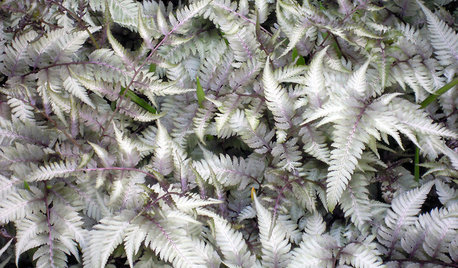
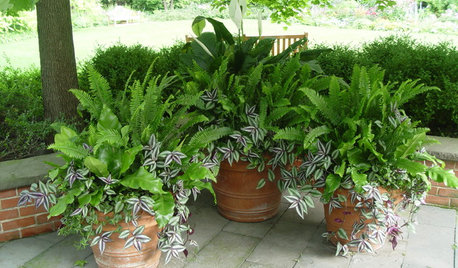
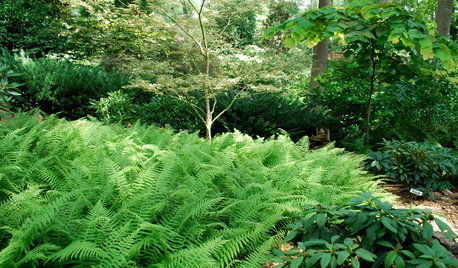
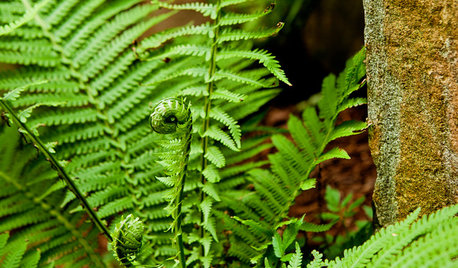
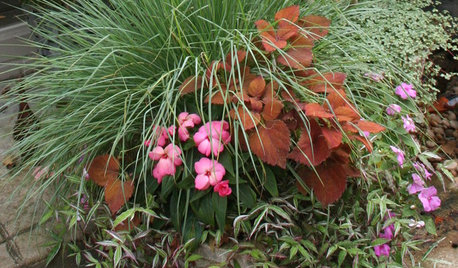


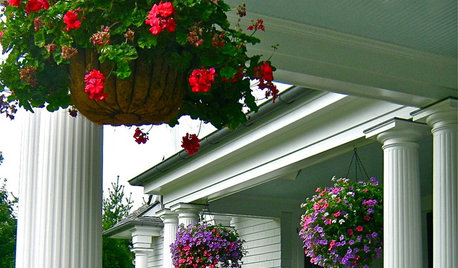







jane__ny